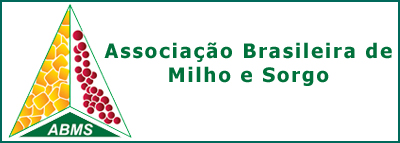PRODUTIVIDADE E COMPONENTES DE RENDIMENTO DE MILHO EM FUNÇÃO DE PLANTAS DE COBERTURA E DOSES DE NITROGÊNIO
DOI:
https://doi.org/10.18512/1980-6477/rbms.v15n2p195-201Keywords:
Plantio direto, Zea mays L.Abstract
RESUMO – O nitrogênio é o elemento mais importante para a cultura do milho e uma forma de fornecê-lo ao sistema é mediante o uso de espécies antecessoras capazes de realizar fixação biológica ou reciclagem eficiente desse nutriente do solo. Objetivou-se avaliar os efeitos das plantas de cobertura e doses de nitrogênio mineral sobre os componentes de rendimento e produtividade de milho cultivado em sucessão. O delineamento experimental foi de blocos ao acaso, em parcelas subdivididas, com parcelas principais constituídas por plantas de cobertura de ciclo hibernal e subparcelas com doses de nitrogênio mineral (0 kg ha-1 de N e 180 kg ha-1 de N) no milho. Na ausência de N mineral, as leguminosas apresentaram os melhores resultados para os componentes de rendimento. A adição de 180 kg ha-1 de N proporcionou incremento de 12,4% no peso de 1.000 grãos. Leguminosas e o nabo forrageiro, na ausência de N mineral, promovem produtividade superior a 6,7 Mg ha-1, similar aos consórcios. A adubação nitrogenada promove incremento na produtividade, independente das plantas de cobertura.
Palavras-chave: plantio direto, Zea mays L., adubação nitrogenada.
EFFECT OF COVER CROPS AND NITROGEN DOSES ON PRODUCTIVITY AND YIELD COMPONENTS OF MAIZE
ABSTRACT - Nitrogen is the most important element for the corn crop, and a way to provide it to the system is through the use of predecessors species, capable of performing biological fixation or efficient recycling of nutrients from the soil. This study aimed to evaluate the effects of winter-cycle cover crops and doses of mineral nitrogen on yield components and productivity of maize cultivated in succession. The experimental design was a randomized complete blocks in a split plot with main plots constituted by cover crops and subplots with doses of mineral nitrogen (0 and 180 kg N ha-1).. In the absence of mineral N, leguminous showed the best results for yield components. The addition of 180 kg N ha-1 increased 12.4% the weight of thousand grains.. Leguminous plants and forage turnip , presented productivity higher than 6.7 Mg ha-1 in the absence of mineral N, similar to the intercropping. Nitrogen fertilization promoted increase in productivity regardless the cover crop.
Key words: No tillage, Zea mays L., nitrogen fertilization.
Downloads
Published
How to Cite
Issue
Section
License
Authors retain copyright and grant the journal right of first publication with the work simultaneously licensed under the Creative Commons Attribution License that allows the sharing of work and recognition of the work of authorship and initial publication in this journal.
Authors are able to take on additional contracts separately for non-exclusive distribution of the version of the paper published in this journal (eg, in an institutional repository or publish as a book), with acknowledgment of its initial publication in this journal.
Authors are permitted and encouraged to post their work online (eg, in institutional repositories or on their website) at any point before or during the editorial process, as this may leadto productive exchanges, as well as increase the impact and citation of published work.



